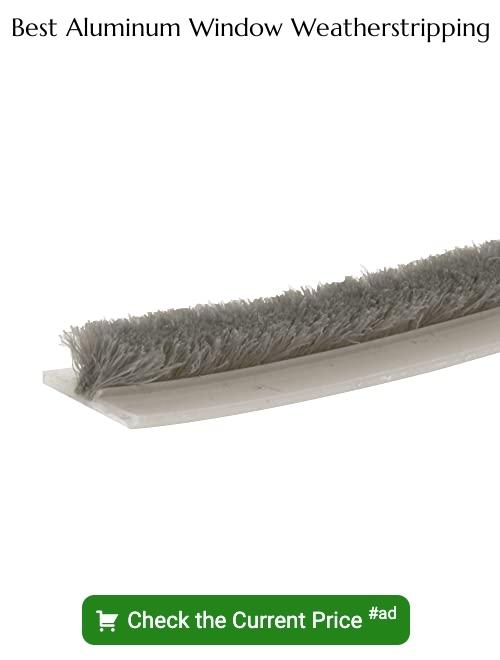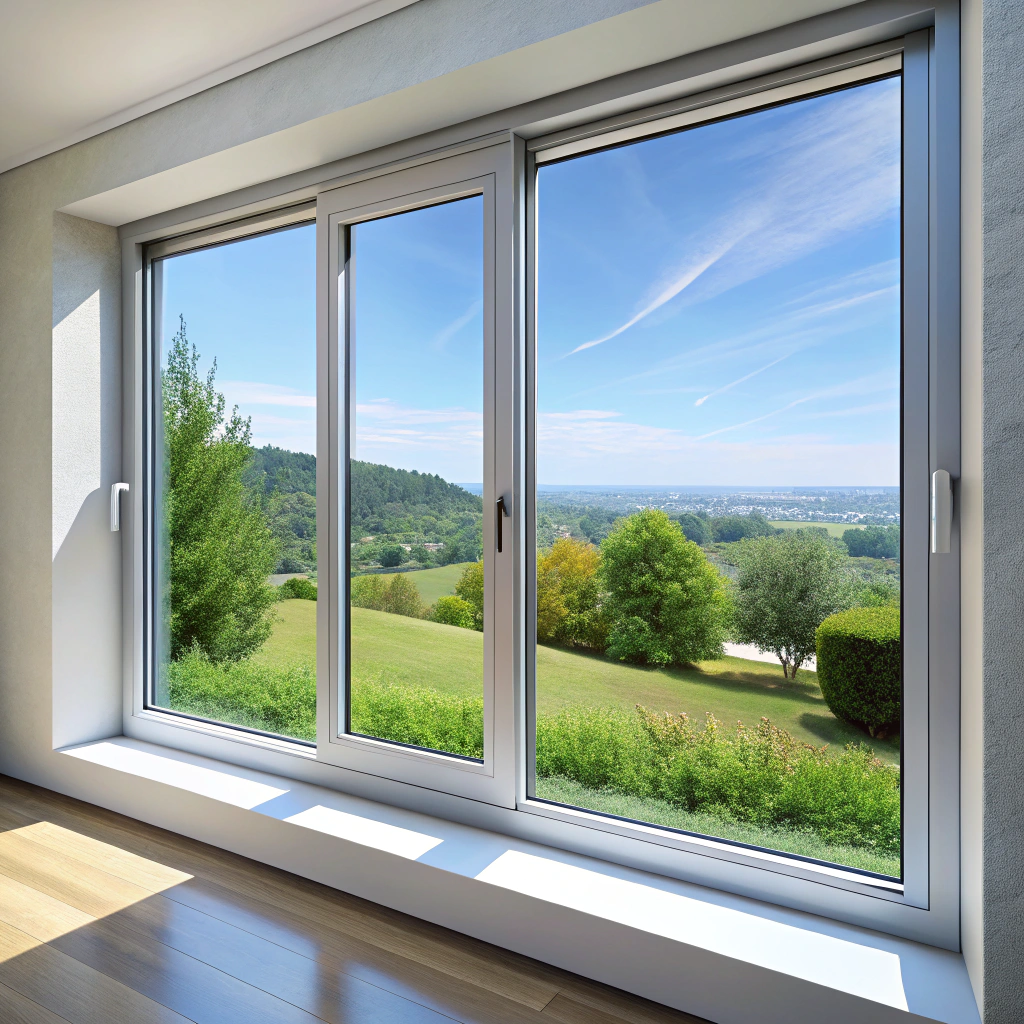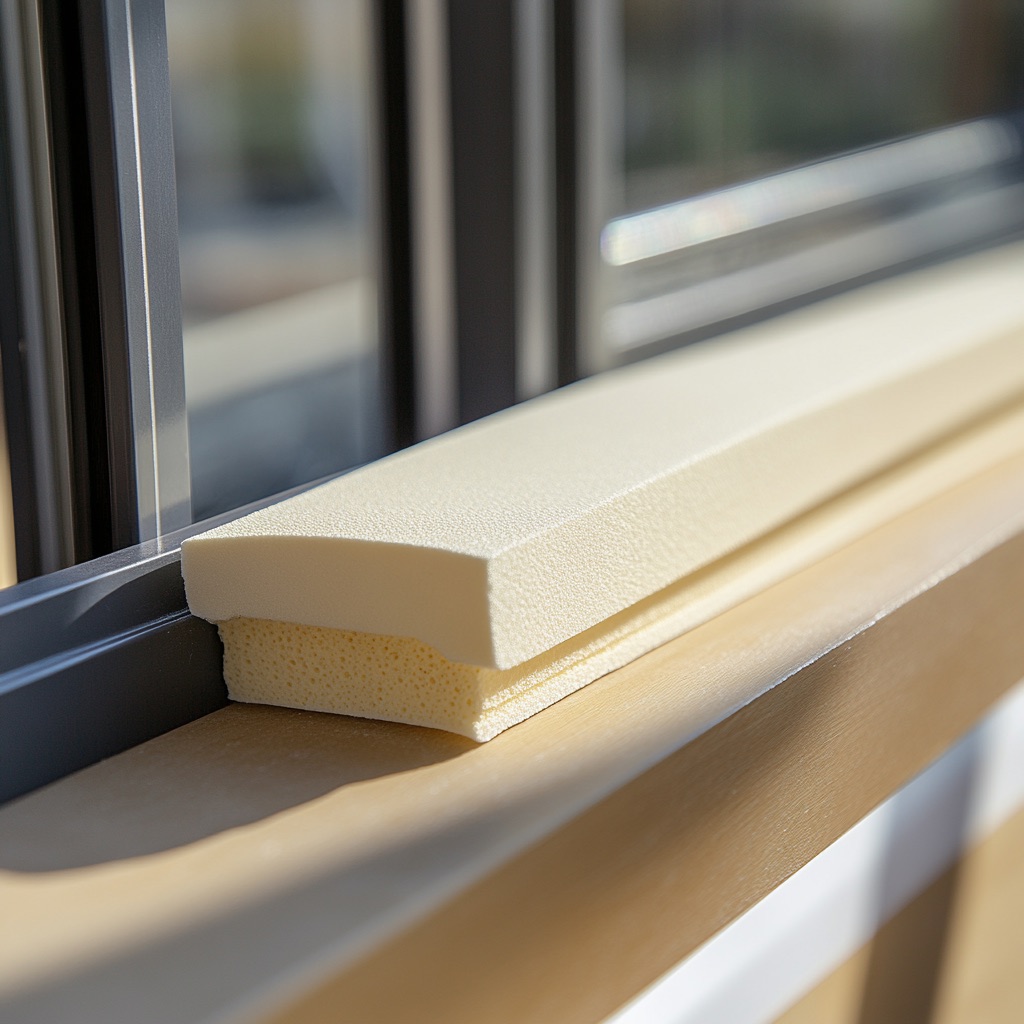In this article, you will get insights on the best aluminum window weatherstripping products in the market and a comparison to help guide your buying decision.
Key takeaways:
- Aluminum window weatherstripping enhances comfort and reduces noise.
- Proper fit and size selection are crucial for effective weatherstripping.
- Follow proper installation methods for optimal performance.
- Aluminum weatherstripping improves energy efficiency and cost savings.
- Aluminum weatherstripping is environmentally friendly and sustainable.
Benefits of Aluminum Window Weatherstripping

Aluminum window weatherstripping enhances comfort by providing a barrier against drafts, resulting in a consistently warm and cozy indoor environment. It also contributes to noise reduction, keeping the hustle and bustle of outdoor sounds at bay for a quieter living space.
The durability of aluminum means long-lasting performance with minimal maintenance, offering a reliable solution for weatherproofing windows. Furthermore, it aids in the prevention of dust and insect ingress, creating a cleaner home.
Importantly, aluminum is resistant to corrosion and wear from adverse weather, securing its position as a resilient option for window sealing.
Selecting the Right Size and Shape for Aluminum Window Weatherstripping
Proper fit is crucial for effective weatherstripping. It ensures no gaps are left for drafts to penetrate, optimizing energy efficiency. The size and shape of the weatherstripping must match the window’s specifications.
Measure the perimeter of the window sash or frame where the strip will be applied. This determines the length needed. Note any irregularities in the frame that may require a more flexible material.
Consider the gap size between the sash and frame. Weatherstripping comes in varied thicknesses and widths to accommodate different gap sizes. Too thin, and it won’t seal properly; too thick, and it may prevent the window from closing.
The shape of the weatherstripping plays a role in the window’s functionality as well. Some common profiles include:
- 1. V-strip (tension seal): Springy and durable, ideal for sliding and double-hung windows.
- 2. Foam tape: Easily compressible, suitable for irregular gaps – available in closed-cell and open-cell variants.
- 3. Rubber and vinyl bulb: Round or teardrop shapes that create a strong seal, used in casement windows.
- 4. Metal channel strips: Interlocking metal units, providing a sturdy seal for older, wooden windows.
Select material that complements the window operation. For sliding and hung windows, a weatherstrip that allows smooth movement is key. Fixed and casement windows can handle less flexible, more robust seals.
Consult with manufacturers’ sizing charts and recommendations to ensure compatibility with your window style and function. Choosing the correct size and shape for aluminum weatherstripping can significantly enhance window performance and longevity.
Installation of Aluminum Window Weatherstripping
Begin by cleaning the window frame to ensure good adhesion for the weatherstripping. Use a mild soap and water solution, then fully dry the surface.
Measure the frame and cut the aluminum strip to fit the top and bottom of the window, as well as both sides.
Peel the backing off the adhesive side of the weatherstrip if using a self-adhesive type. Press the weatherstrip firmly into place within the frame, starting at one corner and working your way around.
Ensure the weatherstrip compresses slightly when the window is closed, creating a tight seal without making it difficult to open or close the window.
For non-adhesive weatherstripping, open the window and fit the strip into the grooves or channels designed to hold it. Secure it with screws or retention clips if necessary.
Remember to check the manufacturer’s instructions as some products may require additional steps or specific tools. It’s critical that the weatherstrip provides an airtight seal to function correctly, so take your time to align it properly.
Energy Efficiency and Cost Savings With Aluminum Weatherstripping
Aluminum weatherstripping improves insulation, avoiding costly air leaks that strain heating and cooling systems. It essentially acts as a barrier, keeping desired temperatures in and adverse weather out, which means your HVAC system uses less energy to maintain a comfortable indoor climate.
When properly installed, this type of weatherstripping can lead to significant savings on utility bills. Homes with drafty windows might see a notable percentage decrease in energy consumption after sealing gaps with aluminum strips. The durable nature of aluminum also means that it’s a long-term investment, resisting wear from weather and friction, translating into less frequent replacements and additional cost efficiency.
Moreover, with energy costs on the rise, the initial investment in quality aluminum weatherstripping can offset future price hikes in electricity and gas. It’s a proactive measure to ensure the home is as energy efficient as possible.
Given that the material is generally affordable compared to other options, aluminum weatherstripping offers a balance between performance and cost, providing a smart solution for homeowners looking to improve their energy savings without breaking the bank.
Environmental Impact and Sustainability of Aluminum Weatherstripping
Aluminum, a highly recyclable material, treads lightly on the planet when repurposed efficiently. Extracting it initially is energy-intensive; however, once produced, it can be recycled repeatedly without degradation in quality.
Weatherstripping made from recycled aluminum significantly reduces the need for virgin material, slashing the environmental footprint associated with additional mining and refining. With long-lasting durability, aluminum weatherstripping outperforms less sturdy alternatives, minimizing the frequency of replacements and thus, the strain on resources.
Moreover, the energy savings from improved insulation in homes can diminish the aggregate demand on power grids, leading to lower carbon emissions. It’s essential to consider that while aluminum weatherstripping is a step toward sustainability, the comprehensive environmental impact hinges on manufacturing practices and end-of-life recycling protocols.
FAQ
How do you reseal aluminum windows?
To reseal aluminum windows, insert a strip of expanded neoprene into the aluminium channel base, apply a small bead of marine-grade silicone sealant onto the expanded neoprene’s face, and assemble the frame around the window material.
How do you weatherproof aluminum windows?
To weatherproof aluminum windows, apply a silicone caulk sealant evenly using a caulking gun, thereby ensuring proper sealing against leaks.
What is the best material for window weather stripping?
The best material for window weather stripping is ethylene propylene diene monomer (EPDM) rubber due to its nonporous nature, easy installation, cost-effectiveness, and efficacy in sealing irregular cracks and blocks.
What is the best weather stripping for old windows?
The best weather stripping for old windows is the self-adhesive weatherstripping due to its convenience and easy-to-cut nature.
How do you identify when aluminum window weatherstripping needs replacement?
Aluminum window weatherstripping needs replacement when there are persistent drafts, increased energy costs, difficulty operating windows, or visible wear and tear on the weatherstripping material.
What are the common pitfalls to avoid when weatherproofing aluminum windows?
Common pitfalls to avoid when weatherproofing aluminum windows include neglecting to clean the window frame before application, failing to apply weather-stripping properly, using wrong weatherproofing materials and not checking for window drafts after installation.
What are the steps to efficiently install weather stripping on vintage aluminum windows?
The steps to efficiently install weather stripping on vintage aluminum windows include assessing the window’s condition, selecting the appropriate weather stripping, cleaning the window frame, cutting the weather stripping to the correct length, peeling to reveal the adhesive, and sticking it onto the frame; if the window is particularly old or in poor condition, professional installation may be advisable for the optimal results.
Recap


